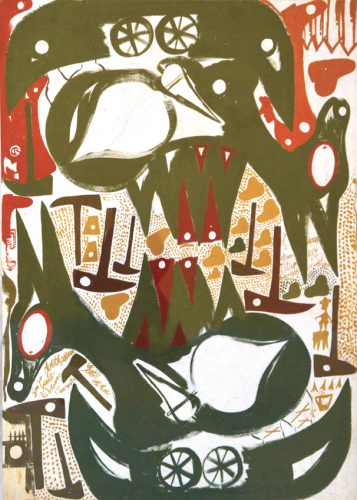
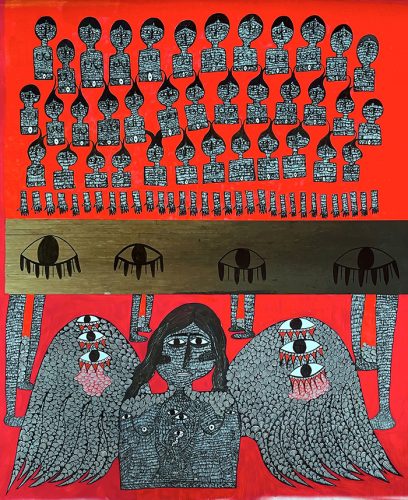
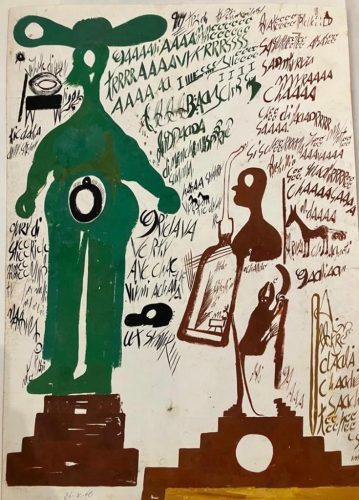
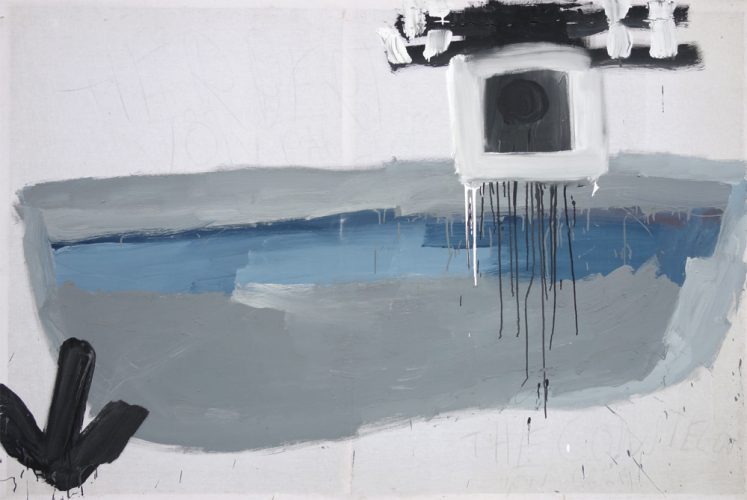
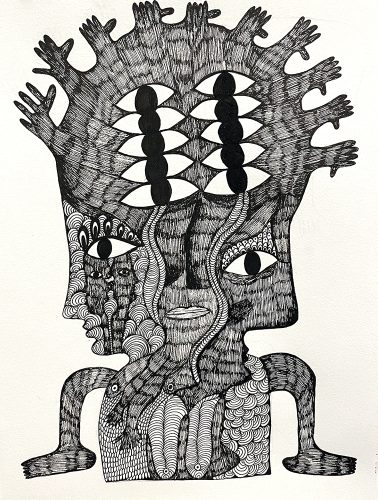
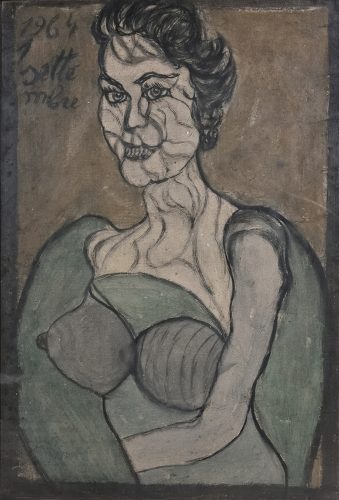
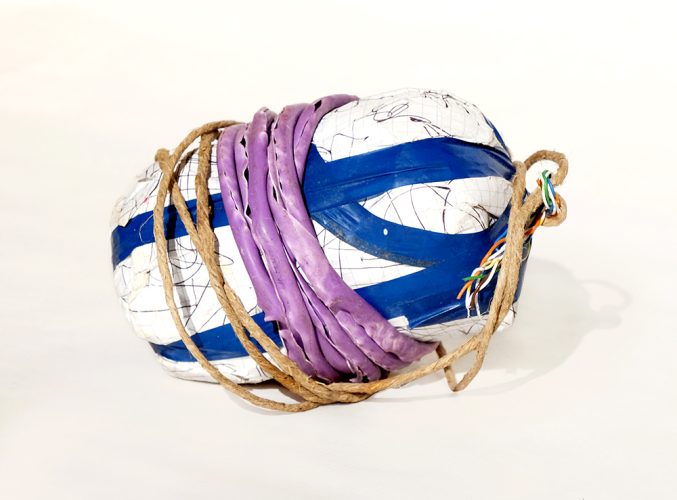
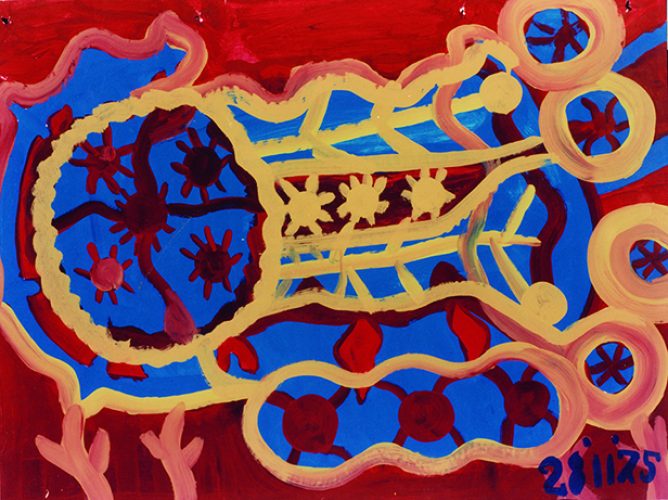
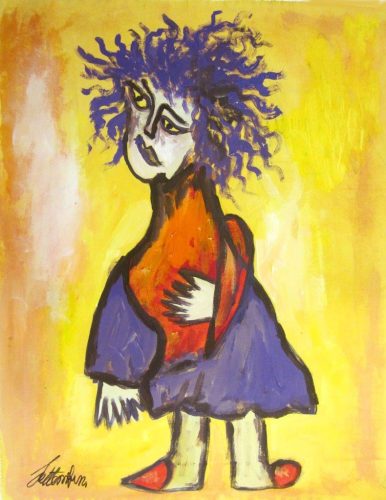
Vernissage: Wednesday November 8, 2023 – 6:30 pm
On view: November 9 – December 22, 2023
Ten irregular years. Maroncelli 12 celebrates its tenth anniversary with a collective exhibition of Outsider artists, the Masters who made the history of the Milanese gallery. “Furtive and wild like a deer”: is the Jean Dubuffet’s definition of Art Brut – a primitive and fresh but also fragile and special art. And it is precisely the search for originality and vision that guides the activity of Maroncelli 12 as well as the need to protect and enhance these author’s work, not contaminated by the art system. An intense work of experimentation, in-depth analysis accompanied by the need and desire to create bridges and establish collaborations.
On view Samaneh Atef (1989), an Iranian artist who has lived in exile in Lyon since 2020, whose work has been exhibited in Italy, for the first time, thanks to the partnership with GliAcrobati gallery in Turin. Atef’s wors are an obsessive repetitiom of graphic signs suspended between the dramatic and the fairytale that investigate the intimate and profound dimension of women and denounce their wounds and abuse. In 2024 Samaneh won the Euward9, an European art award.
The work presented by Paolo Baroggi (1967) is the result of an intense pictorial activity carried out in the Adriano and Michele atelier of San Colombano al Lambro (Milan). First of all the gesture, immediate, absolute, full of color that often fall onto the canvas with a dripping effect and which contrast elegantely with the poverty of the canvas, made of old psychiatric hospital sheets. Then the color, sharp and the space, which is never afraid of too full or too empty.
Raffaele Capuana (1947-2019) arrives at the gallery thanks to the collaboration with Paolo Pocchini, former gallerist and collector. The Self-Portraits, the heads and fish bones testify an unfathomable torment, a continuous interior introspection from which the fascination of his images arises. With an extraordinary technique the artist uses a profound visionary and exceptional freedom of expression to point out the symbols of a life that is not easy and not happy.
Since his first appearance, Davide Cicolani (1978) has brought a wave of freshness, multiplicity and extravagance to the gallery. Traces, weaves, portraits, his works are of great graphic power. Sometimes his characters are innocent, almost childish, sometimes they are wild, serious, but always ambiguous. Consequence of his nomadic life which imposed the sole use of paper as “necessary”. The important thing is that the sheets can be folded so thet they do not take up too much space and are easily transportable.
A disconcerting character, almost a shamanic figure, Antonio Dalla Valle (1939-2020) navigated his world by leaning on the walking stick, created by himself, as if it were a totem, and always carrying with him a bag that he filled everyday with object precious to him: lighters, pieces of plastic, adhesive tape, pens, notebooks. They all serve as material and inspiration for his “conceptual” works.
The women portrayed by Pietro Ghizzardi (1906-1986) wink motionlessly from their proud positions. The painter reports the hard work of the farmer on recycled cartoons, painted on both sides: his color smell of earth, chewed herbs, flowers and crumbling bricks. A few essential tones over which the black of soot and coal prevails, a dark sign that furrows the face and outlines the bodies. The portraits on display highlight looks and passion: that feminine universe from which Pietrone is so attracted and repelled at the same time.
Tarcisio Merati (1934-1995) paints his own personal and very free alphabet, in an explosion of incandescent and swirling colours. Merati does not accept the reality in which he lives, made up of economic and cultural misery to which he react by choosing a new social role. From the moment he discovers painting, in the atelier of the psychiatric ospital where he is hospitalized, he becomes a builder of wonder and beauty. “Freed” by painting, he choose to restart himself and invents another code made of “little cars”, “little airplanes”, “little birds”.
A great protagonist of Art Brut, Franca Settembrini (1947-2003) was admitted to the psychiatric hospital in Florence at the age of 11 where she discovered painting thanks to the historic La Tinaia Atelier. From her works emerge a feminine universe, a world dotted with little girls, young people of rock music, women with thick hair, penetrating and deep eyes, hand with long and sharp fingers.
Carlo Zinelli (1916-1974) is the best known and most collected brut artist abroad, the first to enter the Jean Dubuffet’s collection thanks to the psychiatric Vittorino Andreoli’s report. His artistic career is intertwind with that of sculptor Michael Noble who in 1957, under the Cherubino Trabucchi’s direction, opened a painting atelier in Verona psychiatric hospital (where the author was hospitalized). Zinelli attended the workshop assiduously, filling the paper sheets with drawings of stylized figures, animals and birds. And various glossolalies. This exhibition is also an opportunity to celebrate the fifties anniversary of his death.
Catalog at the gallery with a text by art historian Bianca Tosatti
Galleria Maroncelli 12 – Milano
Copyright © 2024 – Tutti i diritti riservati
